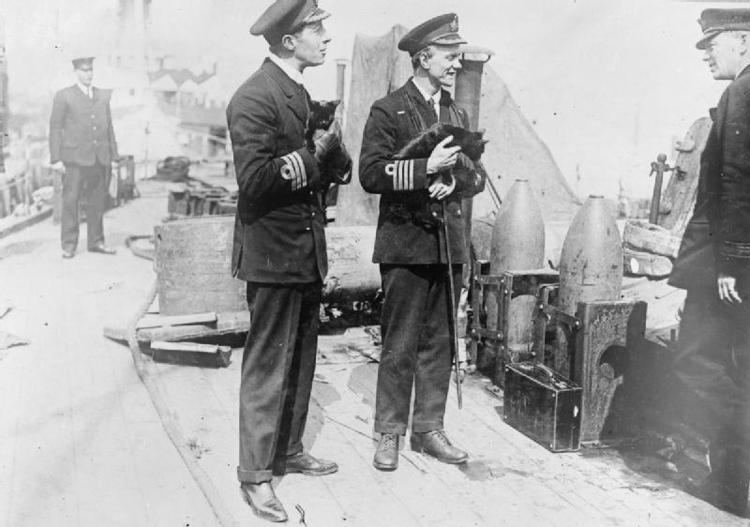Years of service 1898 - 1934 Role Military officer | Rank Vice Admiral Name Alfred Carpenter Died December 27, 1955 Books The Blocking of Zeebrugge | |
 | ||
Battles/wars 1898 Occupation of CreteBoxer RebellionWorld War IWorld War II Similar People Zaiyi - Prince Duan, Song Qing, Empress Dowager Cixi, Adna Chaffee, Ma Lin | ||
Vice-Admiral Alfred Carpenter VC (17 September 1881 – 27 December 1955) was a Royal Navy officer who was selected by his fellow officers and men to receive the Victoria Cross, the highest and most prestigious award for gallantry in the face of the enemy that can be awarded to British and Commonwealth forces.
Contents
Family
Alfred Francis Blakeney Carpenter was born in Barnes, south-west London, the son of Captain Alfred Carpenter and grandson of Commander Charles Carpenter. He attended Bedales School founded by his Uncle Edward Carpenter's close friend John Haden Badley. He was married to Maud Tordiffe and after her death in 1923 to Hilda Margaret Allison (nee Chearnley-Smith).
Career
Prior to World War I he saw naval service in Crete in 1898 and during the Boxer Rebellion of 1900-01. He specialised in navigation from 1903 and received the thanks of the Admiralty for several inventions, and a Humane Society medal for saving life at sea. During World Was I he served on Admiral Jellicoe's staff 1914–15. He was promoted to Commander in 1915 and served as navigating officer of HMS Emperor of India 1915–17.
On 22/23 April 1918, Captain Carpenter was in command of HMS Vindictive which was to land a force of 200 Royal Marines on the mole at Zeebrugge at the start of the Zeebrugge Raid. For his conduct during this action he was awarded the VC:
For most conspicuous gallantry.
This officer was in command of "Vindictive." He set a magnificent example to all those under his command by his calm composure when navigating mined waters, bringing his ship alongside the mole in darkness. When "Vindictive" was within a few yards of the mole the enemy started and maintained a heavy fire from batteries, machine guns and rifles on to the bridge. He showed most conspicuous bravery, and did much to encourage similar behaviour on the part of the crew, supervising the landing from the "Vindictive" on to the mole, and walking round the decks directing operations and encouraging the men in the most dangerous and exposed positions. By his encouragement to those under him, his power of command and personal bearing, he undoubtedly contributed greatly to the success of the operation. Capt. Carpenter was selected by the officers of the "Vindictive," "Iris II.," and "Daffodil," and of the naval assaulting force to receive the Victoria Cross under Rule 13 of the Royal Warrant, dated the 29th January, 1856.
(Rule 13 of the Royal Warrant provides that after an action in which all are equally brave and distinguished, where no special selection can be made, the officer in overall command may direct that one officer may be selected for the award by the officers and men who took part in the action.)
Carpenter was also made an Officer of the Legion of Honour and awarded the Croix de Guerre with palm. He was sent on a lecturing tour through the USA and Canada, 1918–19.
After the war, Carpenter was in command of HMS Carysfort in the Atlantic Fleet 1921–23, Captain of Chatham Dockyard 1924–26, in command of HMS Benbow in 1926 and of HMS Marlborough 1927–28. He was a naval aide-de-camp to the King (an honorary position) in 1929, and promoted rear-admiral and placed on the retired list in the same year. He was promoted to vice-admiral (retired) in 1934. During World War II he commanded the Wye Valley section of the Gloucestershire Home Guard.
His Victoria Cross is displayed at the Imperial War Museum, London, England.
